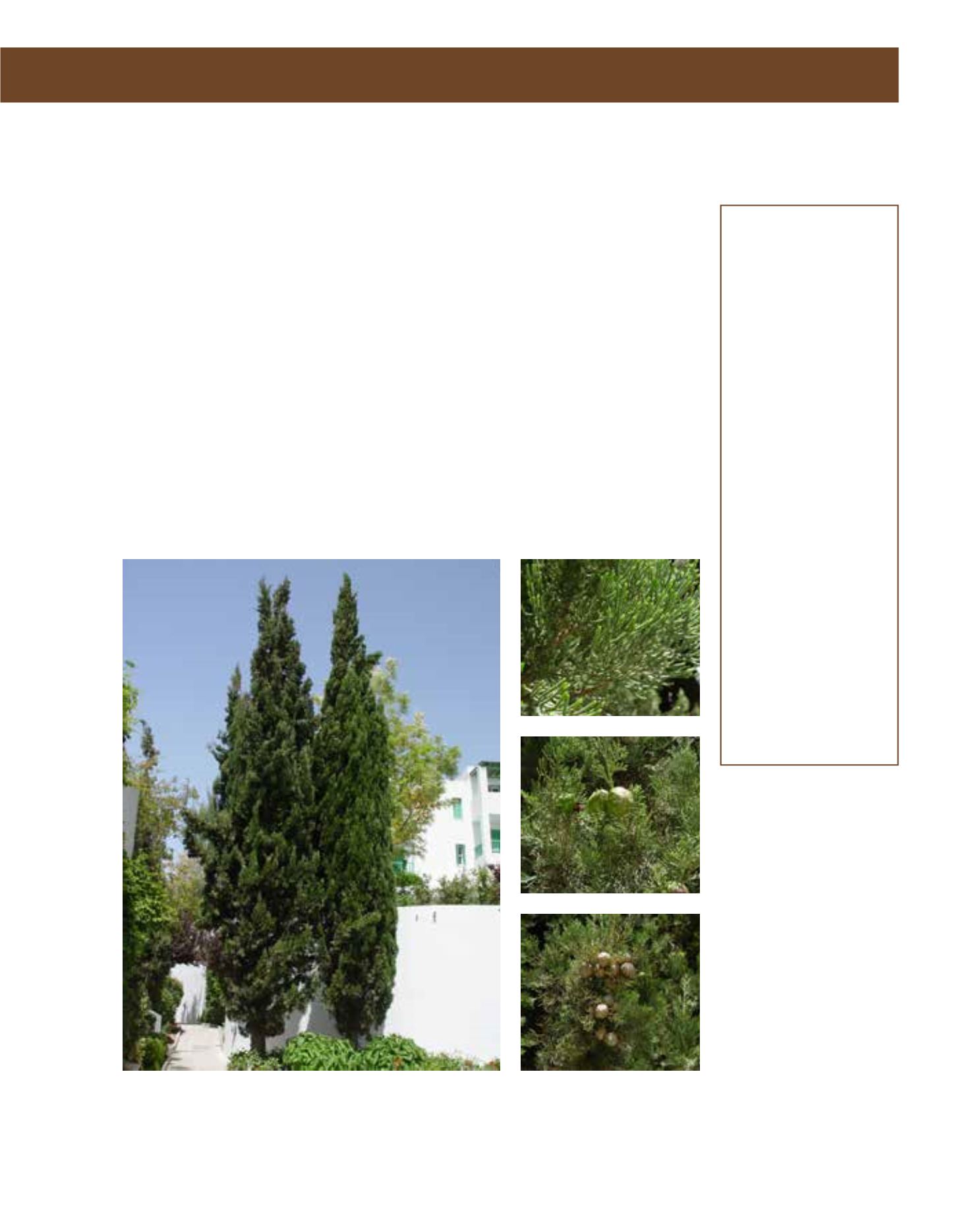

GENERAL
Origin
:
Mediterranean
Vigour
:
fairly fast
growing
Humidity
:
very arid, semi-
arid
Propagation :
sowing and
pricking out,
cuttings
Maintenance :
low
CONDITIONS
Urban climate :
resistant
Dessication :
vulnerable
Stagnant water :
vulnerable
Irrigation
:
medium
Salinity/ppm :
moderate (2000
ppm)
Hardiness
:
-15°C
SHAPE
Type
:
tree
Height
:
20 m-30 m
Spread
:
3 m-5 m
Foliage
:
evergreen
FLOWER
Colour
:
pale yellow
Period
:
March - May
Smell
:
scented,
pleasantly
scented, leaf,
spicy
FRUIT
Type of fruit :
cones
Fruit size
:
2.5 cm - 4 cm
This well-known columnar Italian Cypress can be found throughout the Mediterranean and parts
of the Middle East. It is an evergreen conifer that reaches a height of 20 to 30 metres. The Italian
Cypress grows in limy, clayey soils that can be dry and poor, but must be well drained. This tree
is very erect and has a narrow, tapering column form. The tiny, dark, grey-green leaves are dense
and fine-textured. The stem is densely branched with erect branches. The bark is fibrous, thin
and grey when mature. The flowers and fruits or small cones are inconspicuous. Propagation is by
seed and cuttings. It withstands intense heat and aridity, responding well to deep watering every
month or two. In the ancient world, the cypress wood was treasured because of its durability.
With its elegant and unique vertical accent, it makes a very impressive specimen tree, especially
in formal gardens. It is also valuable as a tall screen, for high hedges, as a wind shelter and in
rows along roads or formal driveways. Too much fertiliser or even water will make the tree leggy
and floppy, spoiling the columnar habit. Some branches may require tying in. Care should be
taken in choosing the location where this tree is to grow, owing to its ultimate size. Attempts have
been made to grow C. sempervirens in Arriyadh, but they have not always been successful: it is
probably best in a wadi, park-like garden sheltered by other trees.
122
Cupressus sempervirens,
Cupressaceae
Italian Cypress,
Cemetery Cypress
















